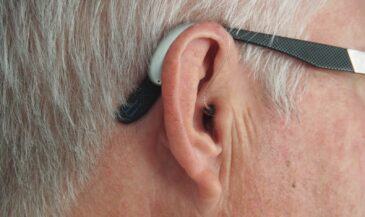By Dr. Christopher Kent
Our understanding of the role of neurotransmitters in physiology has undergone considerable expansion. It is no longer appropriate to consider them solely as chemical agents associated with synaptic transmission. Neurotransmitters are associated with important mechanisms of non-synaptic transmission, as well. Whether one studies synaptic or non-synaptic mechanisms, it is clear that the role of neurotransmitters in biological communications is complex and pervasive.
The chiropractic concept of the “mental impulse” is a “thought” which can be expressed through a variety of neurobiological mechanisms [1]. Bone and Dobson [2] described a model of vertebral subluxation, which includes interference to action potential and interference to mental impulse. One aspect of the mental impulse is the role of neurotransmitters in non-synaptic communications.
For example, Pert and associates [3,4] described a “psychosomatic network” composed of neuropeptides. It has been postulated that the neuropeptide-receptor system functions in providing bi-directional communication between the nervous system and immune system. Immunocytokines produce neuropeptides, and nerve cells produce immune-associated cytokines. Pert [5] characterized this system as “parasynaptic.”
Five of the papers in a recent edition of the Journal of Musculoskeletal and Neuronal Interactions [6] addressed the involvement of neurotransmitters in bone cell signaling. Skerry wrote:
“Neurotransmitter signaling in bone cells has been researched sporadically for some years [The] potential involvement of neurotransmitter mediated signaling in bone cells has raised the possibility that neuronal-like memory mechanisms may be involved in bone.
“It is clear that the extracellular matrix of bone is, by definition, formed by the cells within the tissue, and that those cells function in an orchestrated way as a result of the mechanical and biochemical signaling influences upon them; perhaps intercellular communication is the common thread which can be ascribed as a fundamental property of both bone and nervous tissue.
“Intercellular communication in the nervous system is rapid, with the ability to resolve high frequency repetitions, to modulate those signals in response to inhibitory or potentiating stimuli and to retain persistent record of events as learnt short and long-term memory. Why should the skeleton, which changes its properties over the course of weeks as a result of remodeling, require such a sophisticated system?”
Skerry suggests that such properties may be not only advantageous, but essential.
What are the implications for chiropractic? Research in this area could lead to improved understanding of the relationship between vertebral subluxation, degenerative changes in bone, and altered nerve function.
References
1. Kent C: “The mental impulse.” The Chiropractic Journal. November, 1998, page 32.
2. Boone WR, Dobson GJ: “A proposed vertebral subluxation model reflecting traditional concepts and recent advances in health and science.” Journal of Vertebral Subluxation Research 1996;1(1):19.
3. Pert CB, Ruff MR, Weber RJ, Herkenham M: “Neuropeptides and their receptors: a psychosomatic network.” J Immunol 1985;35(2):820s.
4. Pert CB: “The wisdom of the receptors: neureopeptides, the emotions, and bodymind.” Advances 1986;3(3):8.
5. Pert CB, Dreher HE, Ruff MR: “The psychosomatic network: foundations of mind-body medicine.” Alternative Therapies 1998;4(4):30.
6. Skerry T: “Neurotransmitters in bone.” Journal of Musculoskeletal and Neuronal Interactions 2002;2(5):401-403. http://www.ismni.org/jmni






























































































































































